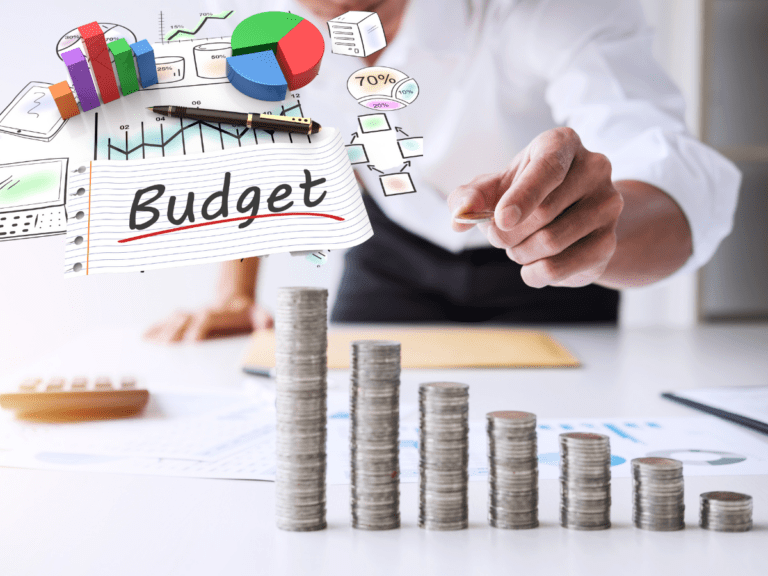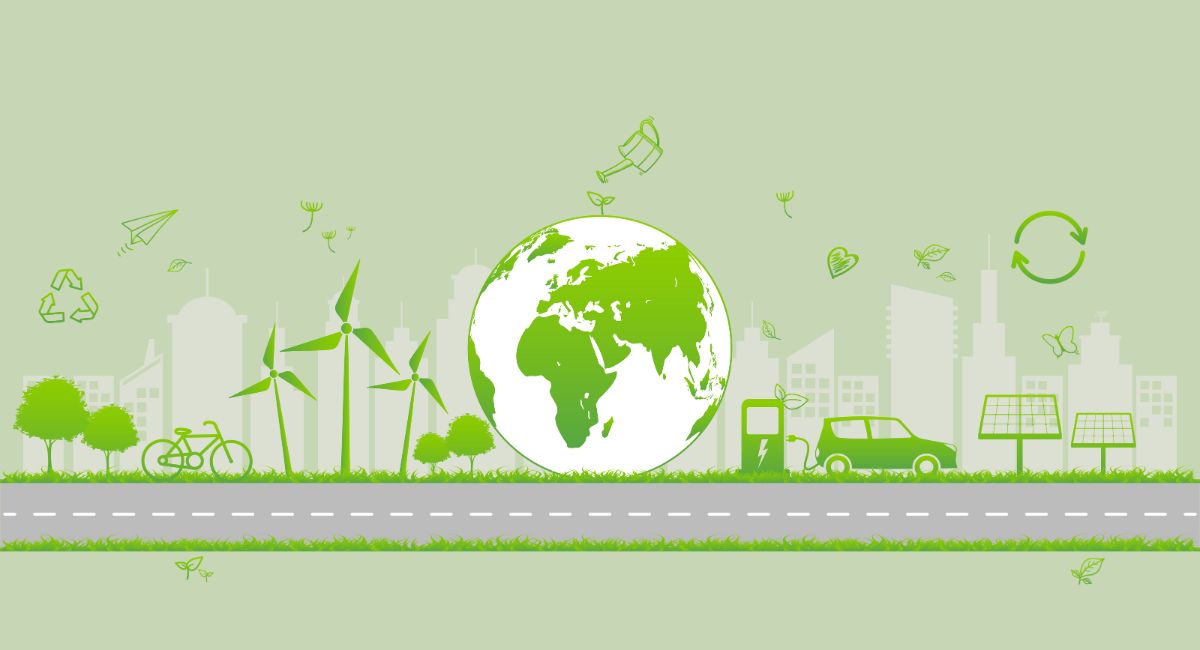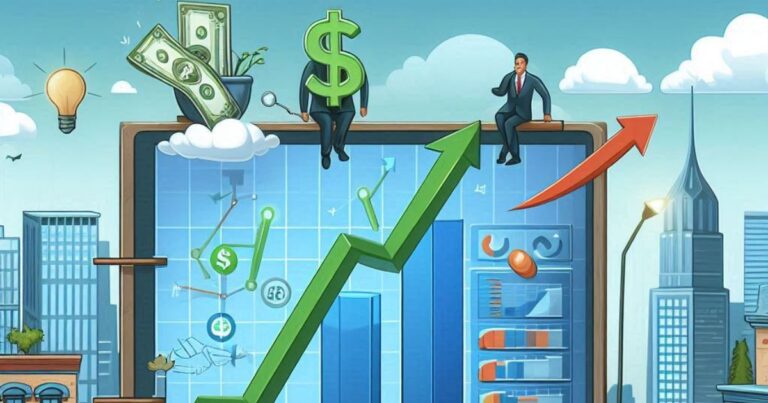Using Sustainable Living To Improve Personal Finance
Are you curious about how sustainable living can actually improve your personal finances? Well, you’ve come to the right place! This post deeply explores sustainable living, its significance in the modern world, and how it can directly impact your financial well-being. So, let’s get started!
Definition of Sustainable Living:
First things first, what exactly is sustainable living? At its core, sustainable living is a lifestyle that aims to reduce our negative environmental impact by making conscious choices and adopting practices that promote a more sustainable future.
It encompasses various aspects of our daily lives, including energy consumption, transportation, water usage, and consumption patterns. It’s about balancing meeting our needs and preserving the planet for future generations.
The Importance of Sustainable Living in the Modern World:
Let’s get real: our planet is facing some tough challenges – climate change, disappearing resources, pollution… the list goes on. That’s why sustainable living isn’t just a trend; it’s absolutely necessary.
These issues have far-reaching consequences for our planet and all its inhabitants, including us. Sustainable living is not just a trendy buzzword; it’s necessary for our planet’s and future generations’ survival and well-being.

The Connection Between Sustainable Living and Personal Finances:
So, how does sustainable living relate to your personal finances? The intriguing part is that practicing sustainable living can help improve your financial situation. Let’s explore some specific ways in which this connection becomes evident:
Want lower energy bills? Of course you do! Here’s the good news:
- Energy-efficient upgrades: Swap those old lightbulbs for LEDs, invest in appliances with good energy ratings, and make sure your home is properly insulated.
- It’s a win-win: You’ll see the change on your monthly bills, and you’ll be helping the planet. That’s what I call a good deal!”
Cost-Effective Transportation Options
Tired of transportation costs eating up your budget? Time to change gears! Here’s how to get around without breaking the bank:
- Ditch the solo commute: Carpool with coworkers, hop on the bus or try a rideshare app. You’ll save on gas and make some new friends.
- Pedal power: For short trips, embrace cycling or walking – it’s free exercise and transportation.
- The future is electric: If you’re in the market for a new car, consider going electric. You might be surprised how much you save on gas in the long run.
Smart Water Usage and Conservation
Water isn’t just good for the planet; it’s good for your wallet, too! Here’s how to save:
- Upgrade your shower game: Low-flow showerheads use less water without sacrificing that satisfying feeling.
- Nature’s watering can: Collect rainwater in a barrel to water your plants – it’s free and better for them than tap water.
- Little habits, big impact: Turn off the faucet when brushing your teeth, and take shorter showers… those minutes add up to gallons saved!
Minimalist Lifestyle and Reduced Consumerism
Ever feel like your stuff owns you? Break free with a minimalist mindset. Here’s the deal:
- Needs vs. wants: Before you buy, ask yourself, “Do I really need this?” It’s amazing how much money you’ll save.
- Give old stuff new life: Instead of buying new, try repairing, repurposing, or donating things you already own.
- Less stuff, more freedom: Minimalism isn’t about deprivation; it’s about ditching clutter and focusing on what matters.
By now, you can see how sustainable living practices directly impact your personal finances. Making conscious choices in these areas can lead to tangible savings and a healthier bank account. But that’s not all—you can implement plenty of practical strategies to embrace sustainable living and reap the financial benefits.
Reducing Food Waste: Unleashing the Financial Benefits Hidden in Your Fridge
Have you ever thought about how much food goes to waste daily? It’s staggering! But here’s the good news: taking simple steps to reduce food waste can help the environment and save significant money. Let’s dive into the financial benefits of reducing food waste and explore practical strategies to make the most of your groceries:

Stretching your grocery budget
When you reduce food waste, you make the most out of the groceries you buy, so you don’t have to spend as much on replenishing your supplies. By becoming more mindful of what you already have and planning meals accordingly, you can stretch your grocery budget and avoid unnecessary spending. This translates into actual savings over time.
For example, instead of letting fresh produce go bad in your fridge, plan your meals in advance to incorporate those ingredients. Consider batch cooking or meal prepping to use up perishable items before they spoil. You can significantly reduce food expenses by getting creative with your cooking and using up what you have.
Minimizing eating out and takeout
When you plan to utilize the food you already have, you’re less likely to eat out or order takeout. These spontaneous food purchases can quickly add up and take a toll on your wallet. By reducing food waste and having a well-stocked pantry and fridge, you’ll be more inclined to cook at home and enjoy cost-effective meals.
Take the time to plan your meals, make a grocery list, and stick to it. This way, you’ll have everything you need, and the temptation to dine out or order in will be minimized. Not only will you save money, but you’ll also be satisfied to prepare delicious and nutritious meals in your home.
Repurposing leftovers
Leftovers often get a bad rap, but they can be a goldmine for delicious, cost-effective meals. Instead of letting leftovers go to waste, get creative and find ways to repurpose them into new dishes.
For example, yesterday’s roasted chicken can be transformed into a flavorful chicken salad or added to a stir-fry. Stale bread can become croutons or breadcrumbs. The possibilities are endless!
Repurposing leftovers reduces waste and eliminates the need to buy additional ingredients for new meals. This not only saves you money but also saves time and effort spent on grocery shopping.
Proper food storage and organization
Investing a little time and effort into proper food storage and organization can go a long way in preventing food waste. Ensure your fridge is set to the appropriate temperature, and use storage containers or wraps to keep your food fresh for longer. Labeling and organizing your fridge and pantry can also help you track what needs to be used first.
Additionally, understanding food expiration dates is crucial. “Best before” dates indicate quality, while “use by” or “sell by” dates are more related to food safety. By understanding these labels and planning your meals accordingly, you can avoid tossing out perfectly good food.
Reducing food waste saves you money and aligns with sustainable living principles. By being conscious of your consumption, you contribute to a more efficient food system and help combat climate change. So, next time you reach for the trash bin, pause and think about the financial benefits of reducing food waste. Your wallet—and the planet—will thank you!
Understanding the Financial Benefits of Sustainable Living
Reduced Energy Consumption and Utility Bills:
One of the most significant areas where sustainable living can directly impact your finances is energy consumption and utility bills. You can see a noticeable decrease in your monthly expenses by consciously reducing your energy usage.
Two practical examples of achieving this are energy-efficient appliances, light bulbs, and proper insulation and weatherization techniques.
When it comes to appliances and light bulbs, opt for those with high energy efficiency ratings. Energy-efficient appliances are designed to use less electricity while still providing the same level of performance.
This means they consume less energy, lowering utility bills over time. Similarly, replacing traditional incandescent bulbs with LED bulbs can save energy. LED bulbs use significantly less energy, have a longer lifespan, and require less frequent replacement, making them a cost-effective choice.
Another way to reduce energy consumption is by ensuring your home is well-insulated and properly weatherized. Proper insulation helps to keep the desired temperature inside your home, reducing the need for excessive heating or cooling.
By preventing heat loss during winter and heat gain during summer, you can rely less on heating and cooling systems, which translates to significant savings on your energy bills.

Cost-Effective Transportation Options:
Transportation expenses can take much of your budget, but sustainable living offers several cost-effective alternatives. One practical example is using public transportation or carpooling. Utilizing buses, trains, or trams can significantly reduce fuel expenses while contributing to a greener environment.
Carpooling is another excellent option, allowing you to share the costs of commuting with colleagues, friends, or neighbors. Not only does it save money, but it also reduces traffic congestion and lowers carbon emissions.
For shorter distances, consider alternatives such as cycling or walking. These modes of transportation not only save you money on fuel but also provide health benefits. Plus, you’ll have the added bonus of enjoying the outdoors and avoiding traffic.
If you’re ready to make a long-term investment, transitioning to electric vehicles (EVs) is worth considering. While EVs may have a higher upfront cost, they require less maintenance and lower fuel expenses than traditional gasoline-powered cars. Additionally, many governments offer incentives and tax credits for purchasing EVs, reducing the overall cost.
Smart Water Usage and Conservation:
Water is a precious resource, and by implementing smart usage and conservation techniques, you can reduce both your environmental impact and water bills. Installing low-flow faucets and showerheads is a practical step in minimizing water wastage.
These fixtures are designed to maintain water pressure while using less water, resulting in substantial savings over time. For example, a low-flow showerhead can reduce water usage by up to 50% compared to a standard showerhead.
Another way to conserve water is by collecting rainwater for gardening purposes. Setting up a rain barrel or a collection system allows you to utilize rainwater instead of tap water for watering your plants. This reduces your reliance on municipal water supplies and lowers your water bills.
Additionally, practicing mindful habits such as turning off the tap while brushing your teeth or fixing leaks promptly can help conserve water and save money simultaneously.
Okay, let’s talk about all the stuff we buy:
Did you know that the average American household throws away 65 pounds of clothing per year? Embracing a more minimalist lifestyle means buying less, which saves you money and helps the environment.
By focusing on conscious consumption and avoiding unnecessary purchases, you can save money while reducing waste. It’s about shifting your mindset from constantly acquiring new things to appreciating what you already have.
Conscious consumption involves evaluating your needs versus wants before making a purchase. Ask yourself if the item is essential or just a fleeting desire. You can save significant money over time by avoiding impulse purchases.
Additionally, decluttering and downsizing your possessions create a more organized living space, allowing you to sell or donate items you no longer need. This turns clutter into cash and reduces the financial burden of unnecessary belongings.
Sustainable living goes beyond environmental benefits; it can also have a positive impact on your personal finances. By reducing energy consumption through energy-efficient appliances and proper insulation, exploring cost-effective transportation options, practicing smart water usage and conservation techniques, and adopting a minimalist lifestyle, you can save money while contributing to a more sustainable future. So why not embrace sustainable living and experience the financial rewards it brings?
Practical Strategies for Sustainable Living
Now that we understand the financial benefits of sustainable living, let’s dive into some practical strategies and tips that you can incorporate into your daily life. These strategies will not only help you reduce your environmental impact but also improve your personal finances. Get ready to take action!

Energy-Saving Tips for the Home:
Regarding energy consumption, you can take several simple yet effective steps to save energy and money. Let’s explore a few practical examples:
- Utilize natural lighting: During the day, make the most of natural light by opening curtains and blinds instead of relying on artificial lighting. Not only does this save energy, but it also creates a warm and inviting atmosphere in your home.
- Switch to LED bulbs: LED bulbs are more energy-efficient than traditional incandescent bulbs. They consume significantly less electricity and have a longer lifespan. Replacing your light bulbs with LEDs reduces energy consumption and saves money on replacement costs.
- Adjust thermostat settings and use programmable thermostats: Set your thermostat to a slightly lower temperature in winter and a slightly higher temperature in summer. Even a one-degree adjustment can make a noticeable difference in your energy bills. Additionally, consider installing a programmable thermostat that automatically adjusts the temperature based on your schedule, optimizing energy usage and reducing waste.
- Unplug electronics when not in use: Many electronics and appliances consume energy, even when turned off or in standby mode. By unplugging them when not in use or using power strips with built-in switches, you can eliminate this “vampire power” and save on energy bills.
Eco-Friendly Transportation Options:
Transportation is another area where sustainable choices can positively impact the environment and your finances. Here are some practical strategies to consider:
- Research and utilize public transportation systems: Take advantage of buses, trains, trams, or subways in your area. Public transportation is more eco-friendly and often more cost-effective than driving a personal vehicle. Research the available routes, schedules, and fares to maximize this sustainable option.
- Carpooling and ridesharing platforms: Coordinate with colleagues, friends, or neighbors to share rides to work, events, or other everyday destinations. Carpooling reduces fuel expenses, minimizes traffic congestion, and lowers carbon emissions. Alternatively, consider using ridesharing platforms that connect drivers and passengers heading in the same direction.
- Explore cycling and walking routes: Opt for cycling or walking instead of driving for short distances. Not only does this reduce your carbon footprint, but it also improves your health and saves you money on fuel, parking fees, and maintenance costs. Research safe and convenient cycling or walking routes in your area and make it a part of your daily routine.

Water Conservation Techniques:
Water is a precious resource, and by implementing water conservation techniques, you can contribute to preserving it while reducing your water bills. Here are a few practical examples:
- Fix leaks promptly: Even a tiny leak can waste significant water over time. Regularly check faucets, pipes, and toilets for leaks, and fix them promptly to prevent water wastage and avoid unnecessary expenses.
- Collect and reuse water for plants: Instead of using tap water, collect rainwater in barrels or containers and use it to water your plants. This saves water and reduces your reliance on municipal water supplies, resulting in cost savings.
- Implement efficient irrigation systems: If you have a garden or lawn, consider installing efficient irrigation systems such as drip irrigation or smart sprinklers. These systems deliver water directly to the roots of plants, minimizing evaporation and ensuring efficient water usage.
Adopting a Minimalist Approach:
Embracing a minimalist lifestyle can have a significant impact on both your finances and the environment. Here are some practical steps to get you started:
- Evaluate needs vs. wants: Before purchasing, ask yourself if the item is a genuine need or just a desire. You can avoid impulse buying and save money by distinguishing between essential and unnecessary purchases.
- Donate or sell unused items: Decluttering your home creates a more organized living space and allows you to donate or sell things you no longer need. Someone else might find value in those items, and you can earn extra cash or contribute to a charitable cause.
- Repair and repurpose items: Consider repairing or repurposing them instead of immediately buying new things when something breaks. By embracing a mindset of sustainability and resourcefulness, you’ll reduce your consumption and save money in the long run.
By implementing these practical strategies for sustainable living, you’ll contribute to a greener future and improve your finances. So why wait? Start making a positive change today and enjoy the financial benefits of sustainable living.
Calculating the Financial Impact of Sustainable Living.
Now that you’re familiar with the practical strategies for sustainable living, let’s explore how you can assess the financial benefits of adopting a sustainable lifestyle. By understanding and quantifying the impact of your choices, you’ll gain a clearer picture of the positive changes you’re making. Here are some practical steps to calculate the financial impact:
Creating a budget and tracking expenses:
To begin, it’s essential to clearly understand your current financial situation. Creating a budget and tracking your expenses will provide valuable insights into your spending habits.
By categorizing your expenses, you can identify areas where you can make sustainable changes and save money. For example, you may discover that you’re spending a significant portion of your income on transportation or energy bills.
Estimating potential savings from energy-efficient upgrades:
One of the significant financial benefits of sustainable living lies in reducing your energy consumption. When considering energy-efficient upgrades for your home, estimating the potential savings is helpful.
For instance, if you plan to replace your old appliances with energy-efficient models, research their energy consumption and compare them with your current appliances.
Calculate the difference in energy usage and multiply it by the cost per unit of energy to estimate the potential savings over time. This will give you a rough idea of the financial impact of such upgrades.

Comparing costs of eco-friendly transportation alternatives:
If you’re exploring eco-friendly transportation options, comparing costs is essential. For example, if you’re considering purchasing an electric vehicle (EV), calculate the potential savings on fuel costs compared to a traditional gasoline-powered car.
Consider the electricity rates, mileage of the EV, and the average fuel efficiency of a gasoline car to determine the potential cost savings over the long term. Additionally, consider the availability of government incentives, tax credits, and reduced maintenance costs associated with EVs.
Tracking water usage and savings:
Water conservation is environmentally responsible and can lead to financial savings. To assess the financial impact of your water conservation efforts, start by tracking your water usage. Monitor your water bills over several months and compare them to previous periods to identify any significant reductions.
For instance, if you’ve installed low-flow faucets and showerheads or implemented rainwater collection for gardening, estimate the amount of water saved and multiply it by the cost per water unit. This will give you an idea of the financial savings resulting from your water conservation efforts.
Assessing the financial benefits of minimalism and conscious consumption:
Adopting a minimalist approach and practicing conscious consumption can have profound financial benefits. Consider the money saved by avoiding unnecessary purchases and the potential income from selling unused items.
Evaluate the reduction in storage costs, maintenance expenses, and the overall impact on your budget. By consciously evaluating your needs versus wants, you can redirect your financial resources toward experiences and investments that genuinely matter to you.
By incorporating these calculations and assessments into your financial planning, you’ll gain a clearer understanding of the financial impact of sustainable living.
Remember, the benefits extend beyond immediate savings and can positively influence your long-term financial well-being. So, take charge of your finances, make sustainable choices, and enjoy the financial rewards of a greener, more conscientious lifestyle.
Investing in Sustainable Living for Long-Term Financial Gains
Sustainable living not only benefits the environment and your immediate finances but can also present long-term financial opportunities. By strategically investing in sustainable practices, you can align your financial goals with your values and contribute to a greener future. Let’s explore some practical ways to invest in sustainable living for long-term financial gains:
Considering renewable energy sources:
Installing solar panels or joining community solar programs: Solar panels allow you to generate clean energy and reduce reliance on traditional energy sources. While the upfront costs may seem significant, the long-term financial gains are substantial.
You can significantly lower or even eliminate your electricity bills by harnessing the sun’s power. Additionally, research community solar programs where you can invest in solar energy projects and receive a share of the generated energy, further reducing your energy costs.
Researching government incentives and tax credits: Governments often provide incentives and tax credits to encourage the adoption of renewable energy.
These incentives can significantly offset the installation costs of solar panels or other renewable energy systems. Research and explore the available programs in your region to take advantage of these financial benefits.
Exploring sustainable investment opportunities:
Investing in environmentally conscious companies: Look for companies prioritizing sustainable practices, environmental stewardship, and social responsibility.
These companies are often at the forefront of innovation and may offer long-term solid financial prospects. By investing in such companies, you not only support their sustainable initiatives but also have the potential to earn financial returns.
Supporting socially responsible investment funds: Socially responsible or sustainable investment funds focus on companies that adhere to environmental, social, and governance (ESG) criteria.
These funds offer a diversified portfolio of sustainable businesses across various sectors. Investing in these funds can align your financial investments with your values while potentially earning competitive returns.

Embracing sustainable food choices:
- Growing your own food: Starting a home garden allows you to produce fresh, organic produce. Not only does this promote self-sufficiency and healthier eating, but it also reduces your grocery bills. By growing herbs, vegetables, and fruits, you can save money and reduce the environmental impact of industrial agriculture.
- Joining a community-supported agriculture (CSA) program: CSA programs allow you to support local farmers and receive a share of their seasonal harvest. By subscribing to a CSA, you can access fresh, locally sourced produce while directly supporting sustainable farming practices. These programs often provide cost savings compared to purchasing products from traditional grocery stores.
Incorporating sustainability into your career:
Seeking job opportunities in green industries: Consider pursuing a career in industries focused on renewable energy, sustainable technology, green building, or environmental conservation.
These sectors are experiencing significant growth and provide opportunities for long-term financial stability. By aligning your career with sustainability, you can contribute to positive change while benefiting from the financial gains of a growing industry.
Becoming an advocate for sustainability in your workplace: Regardless of your field, you can promote sustainability. Identify areas where your company can reduce waste, improve energy efficiency, or adopt sustainable practices.
By advocating for sustainability initiatives, you contribute to a greener workplace and position yourself as a leader in sustainable practices, which can lead to career advancement opportunities.
Investing in sustainable living practices can create long-term financial gains while contributing to a more sustainable future. Whether through renewable energy, sustainable investments, conscious food choices, or a career focused on sustainability, each step brings you closer to financial prosperity and a greener planet. So, embrace these opportunities and let sustainability drive your financial success.
That’s a Wrap on the Financial Benefits of Sustainable Living
Throughout this discussion, we have explored various ways sustainable living can improve your finances. Let’s recap the key points and practical examples that demonstrate the financial advantages of embracing a sustainable lifestyle:
Reduced energy consumption and utility bills:
- Energy-efficient appliances and light bulbs can significantly lower electricity usage and reduce monthly energy bills. For instance, replacing traditional incandescent bulbs with LED bulbs can save you up to 80% in energy costs.
- Proper insulation and weatherization techniques, such as sealing drafts and insulating your home, can enhance energy efficiency and reduce heating and cooling expenses.
Cost-effective transportation options:
- Using public transportation or carpooling saves money on fuel and parking and reduces vehicle maintenance costs.
- Opting for cycling or walking for short distances eliminates fuel expenses altogether and promotes a healthier lifestyle.
- Transitioning to electric vehicles can yield long-term savings on fuel costs, as electric charging is often cheaper than gasoline.
Smart water usage and conservation:
- Installing low-flow faucets and showerheads reduces water consumption without compromising functionality. This can lead to lower water bills over time.
- Collecting rainwater for gardening instead of relying solely on tap water can save you money on irrigation costs.
- Adopting mindful habits like turning off faucets while brushing teeth or using a dishwasher only when fully loaded can significantly reduce water waste and lower water bills.

Minimalist lifestyle and reduced consumerism:
- Embracing conscious consumption by evaluating needs vs. wants helps avoid unnecessary purchases and saves money. Adopting a minimalist approach can redirect your financial resources toward experiences and investments that truly matter.
- Decluttering and downsizing create a more organized living space and generate additional income by selling unused items.
Start Adopting Sustainable Practices for a Healthier Environment and Improved Finances:
By now, you have likely realized that sustainable living offers substantial financial benefits while contributing to a healthier environment. It’s important to remember that our choices as individuals have a collective impact on the planet and future generations.
Adopting sustainable practices improves finances and contributes to a greener and more sustainable future. The financial benefits of sustainable living are not limited to immediate savings but extend to long-term gains and increased financial security.
Furthermore, embracing sustainability is not just a personal choice—it is a responsibility we all share to safeguard our planet for future generations. The decisions we make today will shape the world we leave behind. By adopting sustainable practices, we can inspire others to follow suit, creating a ripple effect that leads to a more sustainable society.
Long-Term Impact of Individual Actions on a Global Scale
Every small action towards sustainable living adds up to a significant impact when multiplied across communities, countries, and the globe. Making conscious choices makes us part of a global movement toward a sustainable future. The financial benefits of sustainable living are just one aspect of the positive change we can create.
So, let’s seize the opportunity to improve our finances while making a meaningful contribution to the planet. Embrace energy efficiency, explore eco-friendly transportation options, conserve water, and adopt a minimalist lifestyle. Together, we can build a future where sustainability and financial well-being go hand in hand.
Remember, your actions matter. Your sustainable choices today can shape a brighter and more prosperous tomorrow—for yourself, future generations, and the planet we call home. Let’s embark on this sustainable living journey and witness its transformative power for our finances and the world.







